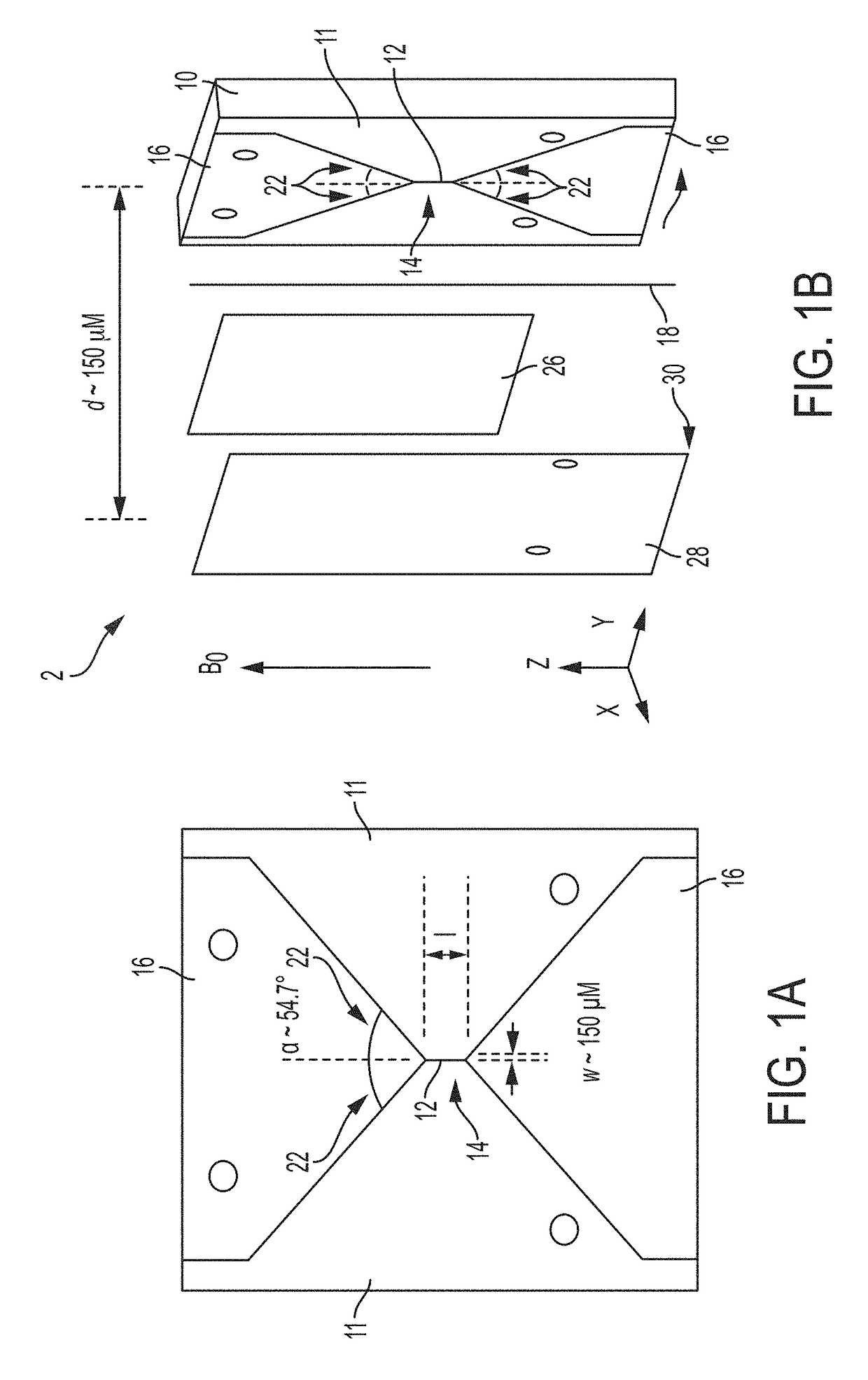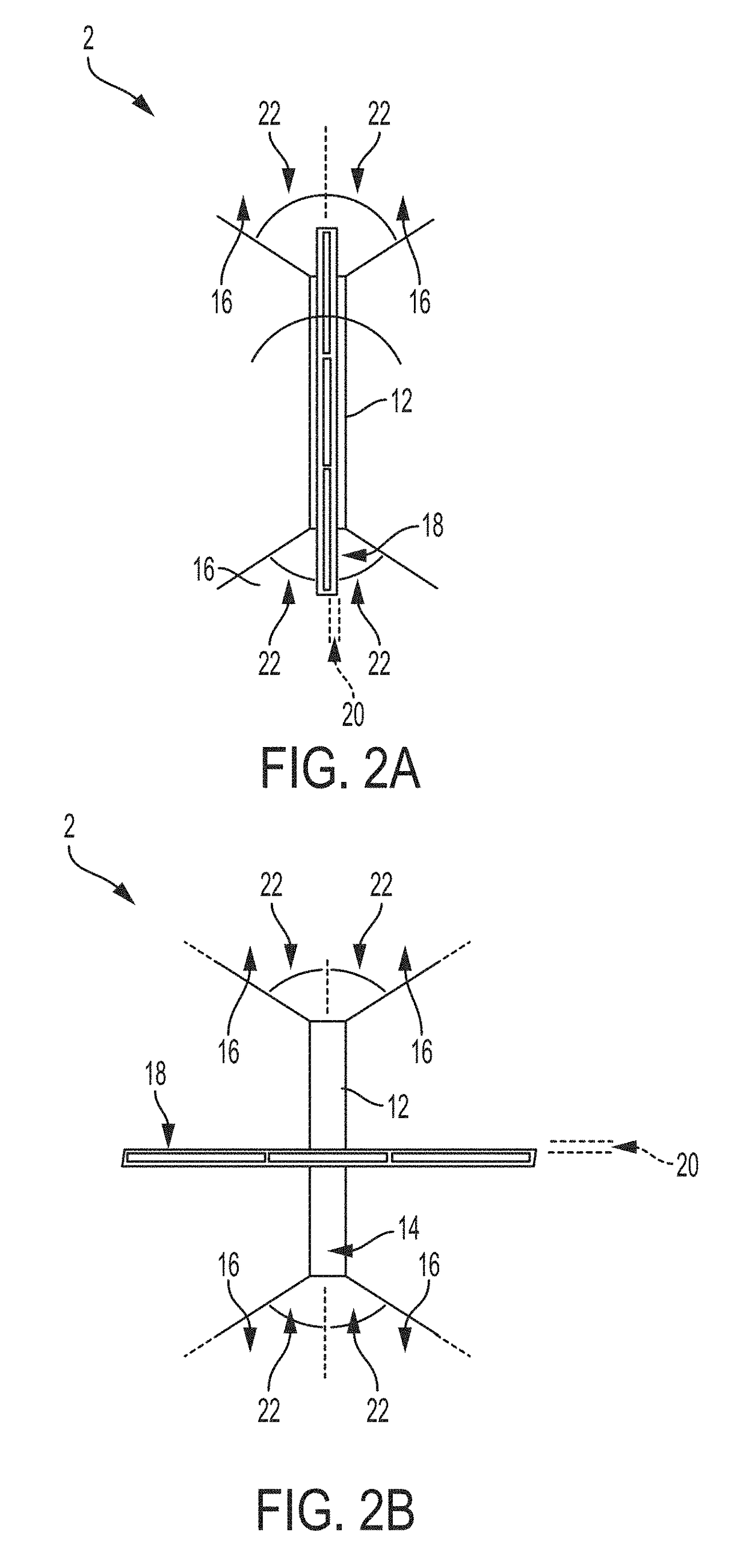Nuclear magnetic resonance microprobe detectors and method for detection of low-volume samples
- Summary
- Abstract
- Description
- Claims
- Application Information
AI Technical Summary
Benefits of technology
Problems solved by technology
Method used
Image
Examples
example 2
[0036]In another set of experiments, liquid samples were taken from a 100 mM lactate solution prepared in water, and processed in a similar set up as described above. 15 nL of lactate sample was introduced within a microcapillary placed onto the strip conductor and analyzed using a modified SHARP pulse sequence with a coherence transfer echo to probe the sample. FIG. 6A shows a representative 2D heteronuclear spectrum obtained for the lactate sample. FIG. 6B shows the modified SHARP pulse sequence utilized to obtain the lactate sample spectrum. The figure shows a triplet due to a ZQ coherence involving two spins involving the CH group and the CH3 group of the alanine, respectively. FIG. 5B shows the pulse sequence utilized to obtain the spectrum of FIG. 5A with cycled phases, phi (Φk), as shown. Evolution of the ZQ coherence occurs during time T1. Detection period begins at the dashed line during which spin locked magnetization is detected between closely spaced pi (π) pulses.
example 3
[0037]In other experiments embodiments of the strip conductor detector 2 described above were used with and without a ground plane to perform 2D COSY and TOCSY spectroscopy experiments in a NMR microprobe. Liquid sucrose samples with sample volumes ranging from about 0.63 nL to about 1.3 nL and sucrose concentrations ranging from about 0.13 nmol to about 1.3 nmol were utilized. Sample solutions were encapsulated between two fluorinert plugs (260 μm sample length) at the center of thin wall cylindrical microcapillaries attached to the strip conductor.
[0038]In one set of tests, a 1.3 nL (0.26 nmol) sucrose sample in H2O (0.2 M in 1.3 nL) centered (0.26 mm sample length) within a thin wall (20 μm) microcapillary (OD 100 μm and ID 80 μm) was attached transverse to the strip conductor. Sample was analyzed without a ground plane. Acquisition parameters included 256 (evolution time T1) increments; 32 scans; an acquisition time of 0.255 seconds; a relaxation delay of 1.5 seconds; and utiliz...
PUM
 Login to View More
Login to View More Abstract
Description
Claims
Application Information
 Login to View More
Login to View More - R&D
- Intellectual Property
- Life Sciences
- Materials
- Tech Scout
- Unparalleled Data Quality
- Higher Quality Content
- 60% Fewer Hallucinations
Browse by: Latest US Patents, China's latest patents, Technical Efficacy Thesaurus, Application Domain, Technology Topic, Popular Technical Reports.
© 2025 PatSnap. All rights reserved.Legal|Privacy policy|Modern Slavery Act Transparency Statement|Sitemap|About US| Contact US: help@patsnap.com



